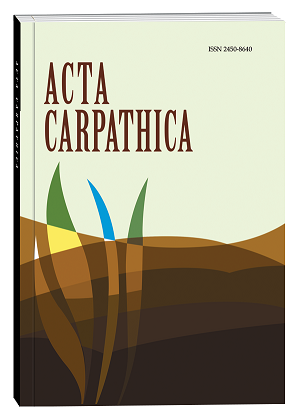METHODOLOGICAL APPROACHES TO MONITORING STUDIES OF THE IMPACT OF MILITARY FIRE ON THE ATMOSPHERIC AIR
DOI:
https://doi.org/10.32782/2450-8640.2024.1.7Keywords:
monitoring, fine dust, air pollutionAbstract
The paper presents methodological guidelines and recommendations for measuring the impact of military operations on air quality, mainly by such indicators as fine dust (solid particles of 2.5 and 10 microns/m3 – PM2.5, PM10), formaldehyde, nitrogen dioxide, sulfur dioxide, carbon monoxide, and ozone. The impact of various means of fire (artillery, tanks, grenade launchers, machine guns, etc.) is analyzed using mobile automatic observation stations capable of continuously recording changes in air quality or a specially designed quadcopter with a gas analyzer that can continuously measure the level of air pollution and instantly move the measurement point both in the plane and vertically. The measurements are carried out in close to real combat conditions, taking into account all factors affecting the measurement results. The location of the analyzing devices was chosen taking into account the factors affecting the sensors, and the most optimal distance to the epicenters of contamination (explosions) was found experimentally. Two scenarios are considered: analysis of air quality directly at the place of the shot, and changes in air quality at the place of impact of a cartridge, projectile, etc. The data obtained after the shots are recorded in the relevant tables and compared with background and regulatory indicators. In addition to the automatic stations, it is also possible to measure air quality at the places of shooting and arrival remotely using specially designed unmanned aerial vehicles (UAVs) with a remote online camera, GPS navigation for precise movement, and mounts for automatic gas analyzers. The use of the unmanned vehicle is carried out in compliance with safety precautions and under the supervision of the relevant licensing authorities. The results of all measurements indicate a sharp increase in the content of pollutants caused by the means of fire. The data obtained can be recommended for use in calculating the environmental damage caused by military operations.
References
Assembly of States parties to the Rome Statute. URL: http://surl.li/oaihe.
Гардащук Т. Війна і довкілля. URL: https://day.kyiv.ua/uk/article/den-ukrayiny/viyna-i-dovkilly.
Проєкт Плану відновлення України : матеріали робочої групи «Екологічна безпека». Липень, 2022 р. URL: https://www.kmu.gov.ua/storage/app/sites/1/recoveryrada/ua/environmental-safety-assembly.pdf.
Війна росії проти України пришвидшує зміну клімату та спричиняє збільшення викидів парникових газів / Міндовкілля. URL: https://www.kmu.gov.ua/news/mindovkillia-viina-rosii-proty-ukrainy-pryshvydshuie-zminu-klimatu-ta-sprychyniaie-zbilshennia-vykydiv-parnykovykh-haziv.
Про схвалення Концепції реалізації державної політики у сфері зміни клімату на період до 2030 року : Розпорядження Кабінету Міністрів України. URL: https://zakon.rada.gov.ua/laws/show/932-2016-%D1%80#Text.
Про затвердження Методики розрахунку неорганізованих викидів забруднюючих речовин або суміші таких речовин в атмосферне повітря внаслідок виникнення надзвичайних ситуацій та/або під час дії воєнного стану та визначення розмірів завданої шкоди : Наказ Міністерства захисту довкілля та природних ресурсів України від 13 квітня 2022 року № 175. URL: https://zakon.rada.gov.ua/laws/show/z0433-22#Text.
Збільшення ризику «кліматичного покарання» через забруднення та зміну клімату. URL: https://public.wmo.int/en/media/press-release/wmo-air-quality-and-climate-bulletin-highlights-impact-of-wildfires?fbclid=IwAR0Ar-G2PzITIdT-T6230lvxUrrxlYdwOh-cnUtc7wIZcOnCY9ivZuuVuIs.
A Practical Guide for Individuals, Cities, Governments, Schools & Universities, Businesses, Civil society. URL: https://wedocs.unep.org/bitstream/handle/20.500.11822/40547/2022_clean_air_day.pdf?sequence=3&isAllowed=y.
Вплив російської воєнної агресії на природні ресурси України: аналіз ситуації, методологія оцінювання / Н. Макаренко, В.Строкаль, Є. Бережняк, В. Бондарь, С. Павлюк Л. Вагалюк, О. Наумовська, М. Ладика, А. Ковпак. Наукові доповіді Національного університету Біоресурсів і природокористування України. 2022. № 4 (98). URL: http://journals.nubip.edu.ua/index.php/Dopovidi/article/view/16137.
Адаменко О.М., Адаменко М.О. Технології інженерно-екологічних досліджень. Екологічна безпека та збалансоване ресурсокористування. 2017. № 1. С. 168–195. URL: http://nbuv.gov.ua/UJRN/ebzp_2017_1_25.
A New Approach to Solving the Problem of Atmospheric Air Pollution in the Industrial City. Hindawi / Z. Oralbekova, T. Zhukabayeva, K. Iskakov, M. Zhartybayeva, N. Yessimova, A. Zakirova, A. Kussainova. Scientific Programming. 2021. URL: https://doi.org/10.1155/2021/8970949.
Proposal for a Directive of the European Parliament and of the Council on ambient air quality and cleaner air for Europe (recast). URL: https://eur-lex.europa.eu/legal-content/EN/TXT/?uri=COM%3A2022%3A542%3AFIN.
Bachrach A., He R., Roy N. Autonomous flight in unknown indoor environments. Int. J. Micro Air Veh. 2009.









